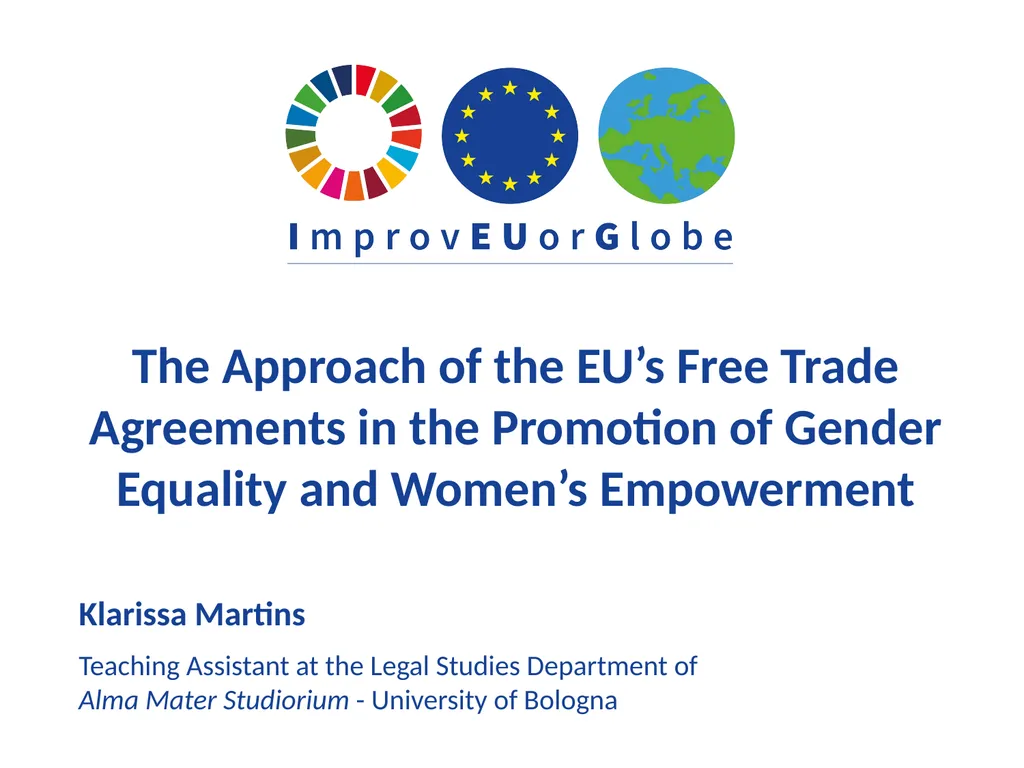
The Approach of the EU’s Free Trade Agreements in
Author: olivia-moreira | Published: 2025-05-24
Description: The Approach of the EUs Free Trade Agreements in the Promotion of Gender Equality and Womens Empowerment Klarissa Martins Teaching Assistant at the Legal Studies Department of Alma Mater Studiorium - University of Bologna 5th Sustainable
Download Presentation
Download the PPT/PDF: Download
Transcript:
Loading transcript�